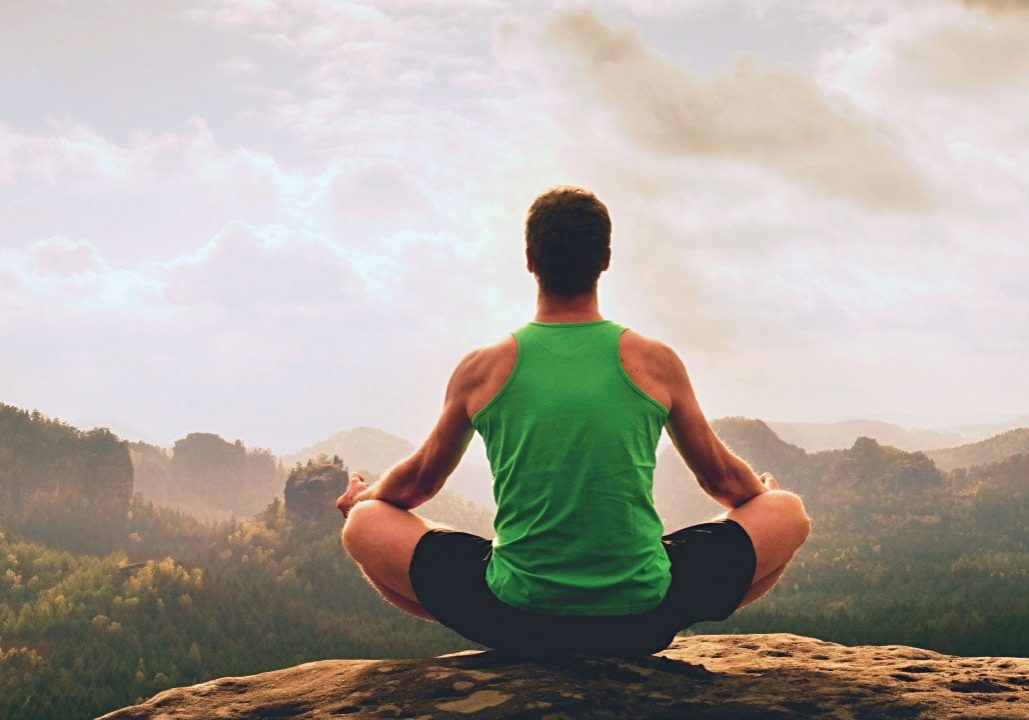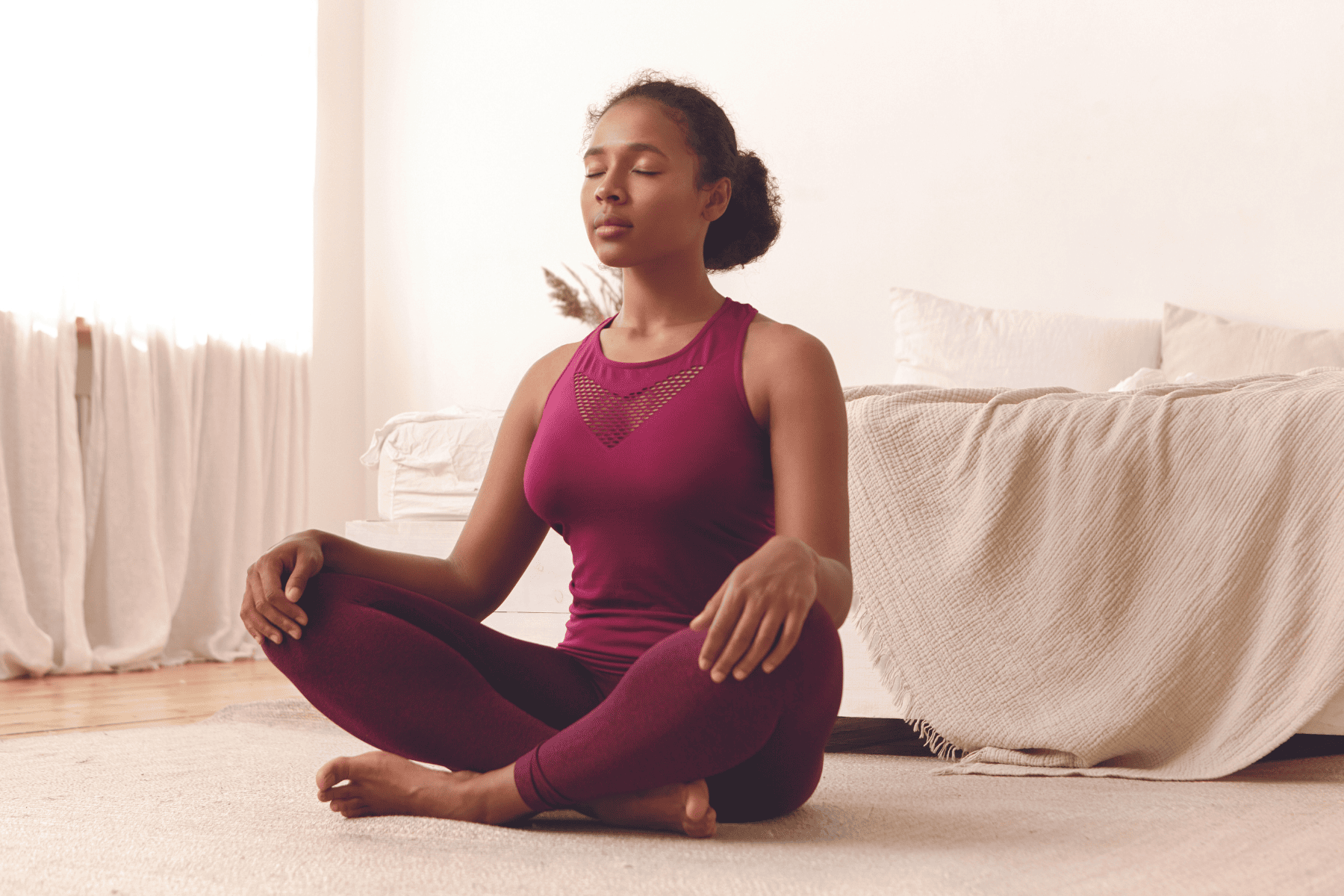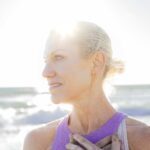
'Work In' Progress
For many people, yoga may start as a simple workout at the gym. But our practice becomes a ‘work-in’ as we start to understand the subtle effects within. By Andrea Marcum
Reading time: 5 minutes
When I first started taking yoga classes at my gym, no confetti dropped from the sky, but there was a lightning bolt of sorts. I realised the vulnerability I was feeling in my life was like the vulnerability I felt in the yoga poses I was doing. The more I practiced, the more it occurred to me that maybe the tools my time on the mat were giving me could be useful to deconstruct my off-mat challenges too. What started as part of my workout began to feel more like a ‘work[1]in’. That eventually gave me the guts to sign up for a teacher training.
The training was at a little local studio located in a strip mall between tanning and hair extension salons. Like political propaganda, banners and flags with the little local studio owners’ self-assigned yoga name and signature long-haired silhouette were everywhere. “He’s the best” quotes from random celebrities were situated at eye-level so as not to be missed, and clothing emblazoned with his brand was his uniform, even away from the studio. He was quite sought after by the ladies – who outnumbered the men 15 to one in our teacher training class. I am forever grateful for the inestimable lessons I learned during my tenure in his kingdom. Some of which were not part of the intended curriculum.
For example, it turns out every one of us, regardless of our ‘practice random acts of kindness’ bumper stickers have an ego to wrestle with — and my local teacher trainer was no exception.
Like a pair of sunglasses you can’t find that are perched right on top of your head, he seemed to have a little trouble locating the yogic ideology he was advocating when he needed it for himself. Distracted by his adoring audience, technical issues with the video camera recorder he’d set up to capture his lecture, and whether to pull his hair into a ponytail or not he began our lesson:
“Pratyahara is a withdrawal of the senses.” He told us, checking himself out on the video monitors.
He quoted from the Bhagavad Gita while indicating an adjusted camera angle to the work-study student behind the lens. “This fifth limb in Patanjali’s Yoga Sutra asks us to draw our awareness away from outside stimuli or the external world and turn quietly inward.”
It was the ‘work-in’ I was intrigued by on my mat, and at that moment I realised he was a mirror of my own turbulent tendencies.
Tossed about by superficial agitation, none of us can dive deep enough to get beneath our whirlpools of thought and commotion. His was the perfect presentation for me to grasp that pratyahara is a state of consciousness, not just an intellectual concept. It awakens us to the gnosis of our true self instead of the clamour of stories we tell ourselves, distractions we indulge or personas we perpetuate. Pratyahara allows us to pay attention to a more intuitive voice and prepare for concentration (dharana) and meditation (dhyana).
A super helpful illustration of this for me is that pratyahara is absorbed through the subtle layers of the Self, our five sheaths called koshas. From the ancient Hindu texts known as the Upanishads, they are:
Annamaya kosha — our outermost layer, skin and bones
Pranamaya kosha — energy channels
Manomaya kosha — manas means mind, the mental and emotional
Vijnanamaya kosha — wisdom, intellect, as well as ego
Anandamaya kosha — ananda means bliss, it is the innermost, soul, Atman, absolute, truth, Source
Imagine them like the layers of an onion, or those little Russian dolls that fit inside one another representing nature’s five elements within us: earth, fire, water, air and ether. Our outermost layer of skin and bones (annamaya kosha) is most tangible which is what makes the poses a particularly immediate entry point for most of us. Pratyahara asks that we pare down the kerfuffle from our bodies as well as our minds, emotions and ego so that we can land in the absolute truth of our soul body (anandamaya kosha).
When we feel frustrated or uninspired, we often waste our energy searching for scapegoats and excuses. If we focus on everything and everyone else, we don’t have to look at ourselves. On our mat that can show up as endlessly fixing…our shirt, our mat, our props, our pedicure (I’ve had someone get up off their mat and go to their purse to check their lipstick) just to avoid the stretch or stillness of a pose.
Off our mat, our distractions and excuses ambush communication, connection, conversation, conviction, commitment, courage…and that’s just one letter of the alphabet.
Pratyahara is a vital component of yoga philosophy. It’s an inward, not outward turn — the practice of not being distracted. Listening to our breath instead of the sound of an incoming text message. Clearing our minds of the chitta vritti (whirlpools of thought) that keep us looking frantically outside for answers that lie within.
With pratyahara we discover a way to consistently concentrate our energy on what matters and not be sabotaged by what doesn’t. Like the koshas, the layers of our yoga practice are absorbed from skin and bones to the soul body. It may start as a ‘workout’, but ultimately yoga is a ‘work-in’ — and I believe all of us are a ‘work-in’ progress.
Andrea Marcum is a yoga teacher and author (andreamarcum.com)





